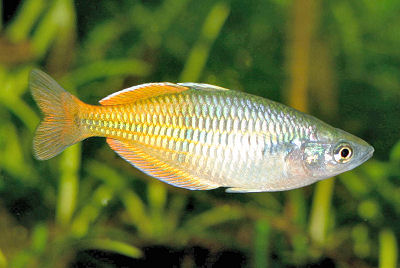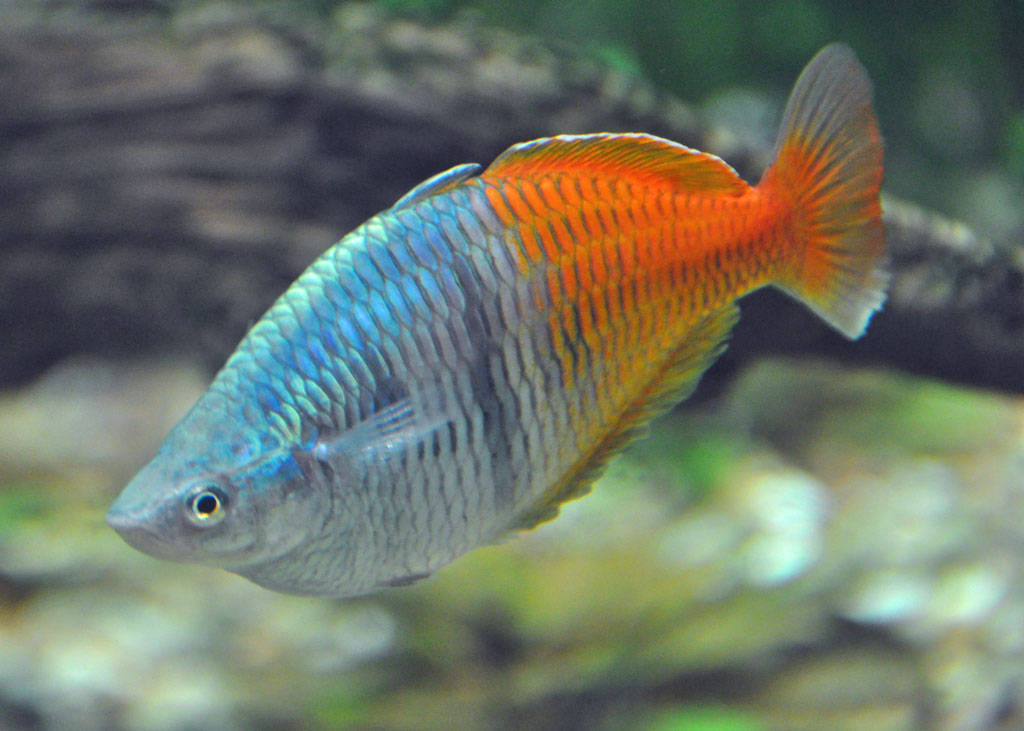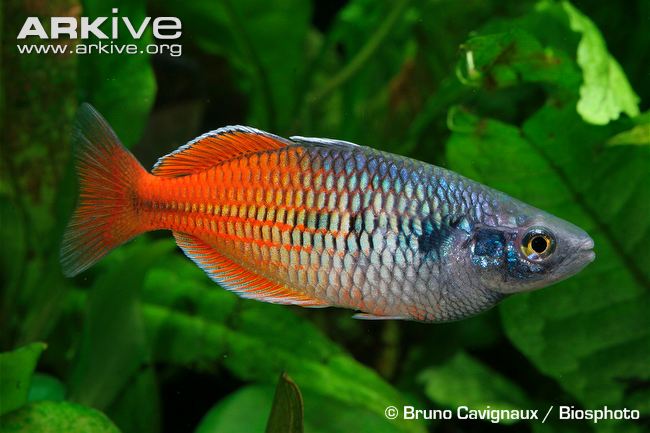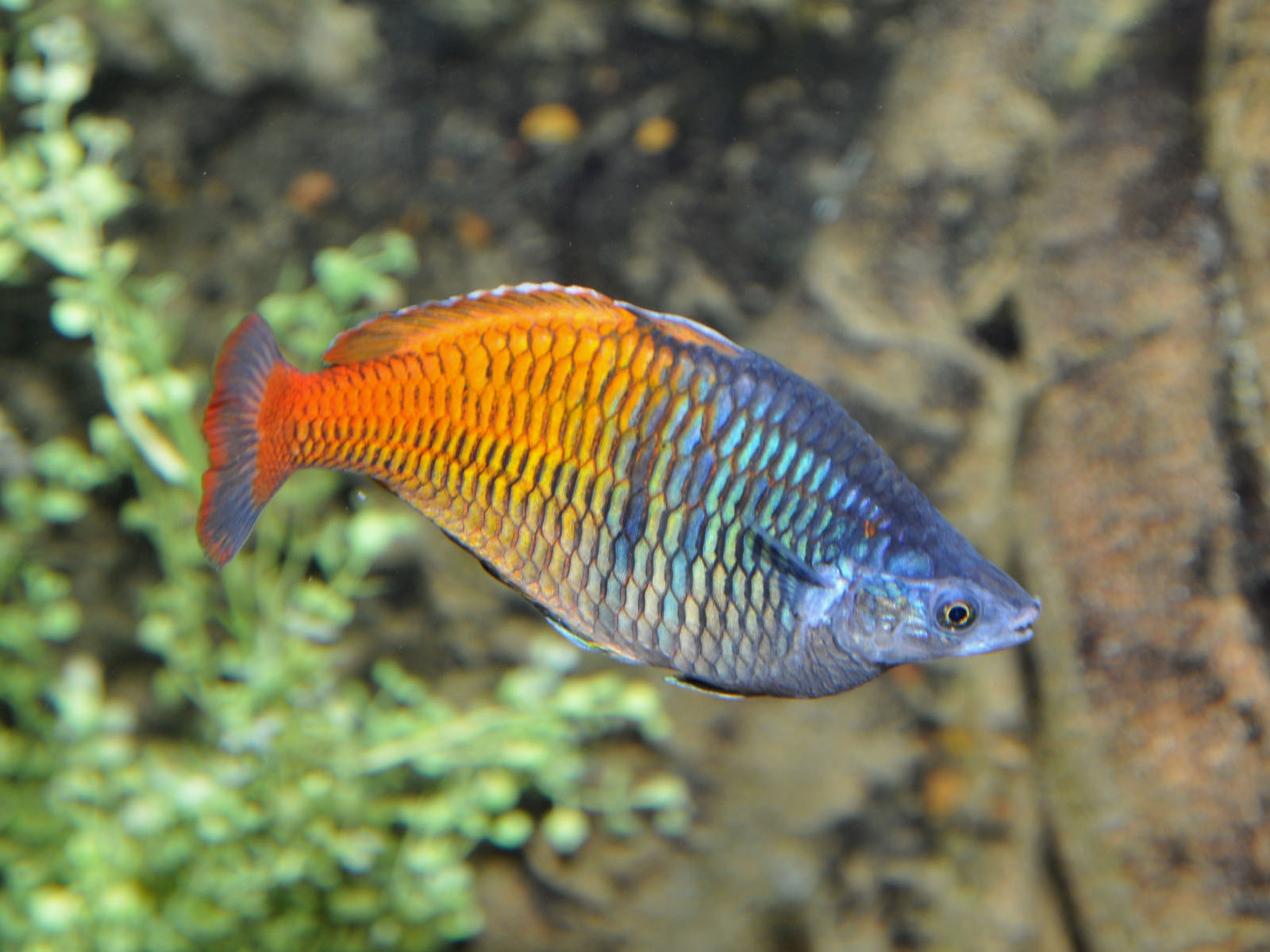
Melanotaenia boesemani
FAMILY
Melanotaeniidae
TAXONOMY
Melanotaenia boesemani Allen and Cross, 1980, Ajamaru Lakes,
Vogelkop Peninsula, Irian Jaya, Indonesia.
OTHER COMMON NAMES
None known.
PHYSICAL CHARACTERISTICS
Attains 4.5 in (11.5 cm) in maximum length. Laterally compressed
and deep bodied, with the head tapering to a point. A
striking fish, with blue-gray coloration on the front half of the
body and brilliant orange on the back half. Dorsal fins have a
white margin.
DISTRIBUTION
Ajamaru Lakes region of Vogelkop Peninsula, New Guinea.
HABITAT
Clear lakes and streams.
BEHAVIOR
Shoaling fishes that feed on insects at the surface.
FEEDING ECOLOGY AND DIET
Omnivorous; prefers terrestrial insects but also feeds on
aquatic insects, zooplankton, and algae.
REPRODUCTIVE BIOLOGY
Easy to breed in captivity. Eggs are laid in aquatic plants, and
females produce 10–20 eggs per day, spawning daily for an extended
period.
CONSERVATION STATUS
Listed as Endangered by the IUCN.
SIGNIFICANCE TO HUMANS
Very popular in the aquarium trade. In the late 1980s, before
government restrictions on the fishery, 60,000 males a month
were being removed from the wild to be sold as aquarium fish.
While rainbows sometimes may be eaten, they are reportedly
bony and have a strong formic acid taste, owing perhaps to
their preference for ants as a source of food.
Photo Gallery of - Boeseman’s rainbowfish





 Animalia Life
Animalia Life